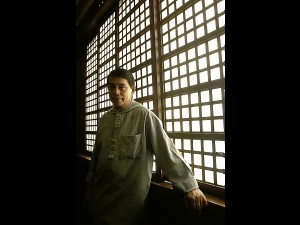
This is the story of a house from an old, forgotten era in San Fernando, Pampanga, and a man from the cloistered world, and how the two have reconnected themselves to today’s world that is vastly different, congested and threatened.
The result is a heartwarming story of a salvaged heritage, of reclaimed roots and familial ties made even stronger by natural calamities.
Dom Martin Gomez is a Benedictine monk from the Monastery of the Transfiguration in Bukidnon, who is perhaps still better known to many, particularly in lifestyle circles and high society, as the famous designer Gang Gomez.
When he entered the monastery in the ’80s, he was clearly at the peak of his career, one of the top fashion designers in the country with Joe Salazar, Inno Sotto, Auggie Cordero and Ernest Santiago. But he left that world of fashion, glamour, fame and fortune when he realized, in his relatively young adulthood, that he found his genuine fulfillment in his relationship with God.
His yearning for the religious life was such that even after discouraged attempts—he had been dissuaded from entering—he pursued his application with the monastery.
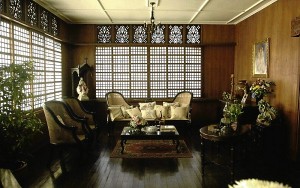
I still distinctly remember that afternoon at Café Adriatico in Malate, when he told me of his plan, his determination to lead the life of a monk. He wanted me to be the first in media to know, since I had covered his career consistently.
That afternoon, I was simply teary-eyed because I knew it would be my goodbye to an artist whose talent I had come to admire, to a man I had grown to respect, but more important, to a friend I had become close to.
“You mean we will not be seeing you again?” I asked, because after all, he would be a monk. Turned out, I was only partly right.
Dom Martin committed his life to serving God, but through the decades he also helped enrich the community in and around the Monastery. Like every monk, he toiled the earth with the community to produce coffee (the Monk’s Blend of Bukidnon) and would ask us now and then to help promote the monks’ produce.
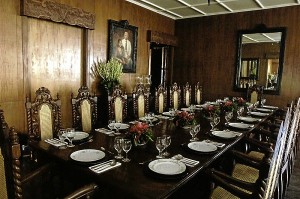
He helped form the children’s choir of Malaybalay, Bukidnon, which became known not only in the country but also in some parts of the world where it performed. In the previous decade, he designed and sewed priestly vestments, gathered them in an exhibit, and published them in a book so that the public may know of this religious art and the craftsmen involved in it.
Apparently, Dom Martin, although he has embraced monastic life, was also wont to nurture the outside world—for the greater good of man.
Social values
His life is proof that faith in God could also yield such strong faith in one’s fellowman. It is an example of how God-centered values could be the source of the social values that the Filipino must stand for; how a man’s personal pursuit—in his case, monastic life—could be reconciled with the pursuit of a better world. In this era consumed by materialism and graft and corruption, how Dom Martin leads his life is a timely example.
When he told me that in the past year, he worked to restore the ancestral home of his clan, the Hizons, of Pampanga, I saw this yet another activity in that light.
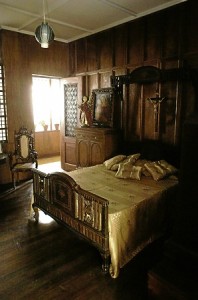
The original bahay na bato structure was built a century ago in the present property that is now in the city of San Fernando. It was renovated in the ’30s but was razed in a fire in 1950; it was rebuilt that same time. That’s the large two-story house that now stands.
However, it had been abandoned for 16 years, since the huge floods in 1995 when the water rose to within two steps to the second story. Dom Martin’s parents, Domingo Gomez and his wife, the former Eloisa Paras Hizon, were living there when the floodwaters rose; they had to be rescued. Since then, the house had been uninhabitable, until Dom Martin rehabilitated it last year, with the support of his family.
The urge to restore came when Dom Martin began work on the Hizon family tree and a book on the storied clan that included a hero of the Philippine Revolution, Gen. Maximino Hizon, and the Pampanga leaders of the Liberal Party. Dom Martin’s father has died; his mother Eloisa is now 91.
“Five years ago, when my father died, my aunts reminded me about the family tree and the book,” Dom Martin recalls.
From constituting the family tree, he proceeded to write the book on the clan. But apart from recounting the clan’s history, he realized that he was also recalling Pampango traditions as they were experienced by the clan through the generations—all seven generations.
“Like, before the midnight Mass of Christmas, there would be a lantern procession,” he recalls, “and lolo would have lanterns made, of various shapes. Our aunt, Ramona, would be baking cakes in the kitchen, while my mother made sugar candies.” That was the time when desserts were homemade, apart from all the other dishes.
Dom Martin’s maternal grandparents were Ramon Hizon and the former Maria Paras. His great grandparents were Anacleto Hizon and the former Victoria Singian.
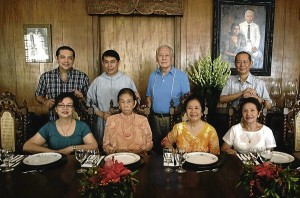
Ramon and Maria Hizon had seven daughters—Lourdes, Remedios, Marina, Corazon, Aurora, Ramona, Eloisa (the youngest, Dom Martin’s mother)—and five sons—Anacleto, Augusto, Gregorio, Rodolfo, Bienvenido.
Theirs was a landed clan, and like prominent families in Luzon, owned haciendas. They also figured in politics and were, as Dom Martin puts in, “staunch Liberal Party members.” In the post-war decades, Rodolfo Hizon was San Fernando mayor. This was the era when the mayors and governors, being of the landed class, spent their own money to govern.
Philippine presidents had been hosted in this ancestral home during their visits to Central Luzon—Elpidio Quirino, Ramon Magsaysay and Diosdado Macapagal. The young Benigno “Ninoy” Aquino Jr. was also an occasional visitor.
Sense of hilarity
It is with some sense of hilarity that Dom Martin and his Hizon cousins recall how the house was rebuilt in 1950 after it almost burned down. Their grandfather Ramon was confined in the hospital when the fire occurred. Fearing that her husband might finally succumb to heart attack if he learned of the fire, his wife Maria had it reconstructed almost with lightning speed.
It is stories such as these that make this ancestral home an integral part of the clan’s history. They are what makes a clan reunion, particularly on Good Friday and Christmas, worth coming home to in San Fernando, from wherever in Metro Manila they must have settled down, or in Dom Martin’s case, in Bukidnon.
Today, from the busy street, the house is barely visible, but once you drive past the gate and see the two-story concrete structure with capiz-shell windows of old, you catch a sense of history. Such turn-of-the-(20th) century homes are disappearing fast, whether in the city or the provinces—losing out not only to financial needs but more so, to a dying sense of heritage. Simply put, in almost all cases, the past cannot feed the present.
The first story or the ground level is closed because of flood damage. The second story is reached through the stairway built outside, like in many old Filipino homes.
As you enter the second story, however, the beauty of the Filipino past unfolds. Like in the traditional bahay na bato, it is an open space where laid out are the dining room and a vast living room, where the air flows unimpeded. It isn’t so much grand as it is genteel.
While the ceiling had to be replaced, the old wood has survived—of the flooring and of almost everything else. Old wood doesn’t rot; in that way was Dom Martin’s task of rebuilding manageable.
You’re greeted by the sight of a huge rectangular narra dining table that seats 18. This table had been the setting of many milestones in the clan’s life, including the wedding in 1936 of Hizon son Augusto to Manuela de Leon.
As in traditional homes, the living room has islands of turn-of-the-century wood furniture. The social area is bounded by the bedrooms which Dom Martin refurbished with antique santos and religious statues. The heirloom beds have survived generations. In one of them, Dom Martin recalls, an ancestor lay in state—following the practice of the early eras.
Like in the bahay na bato, the bedrooms are lined with inner corridors—for privacy so that the inhabitants could go about their business unseen by visitors.
To Dom Martin, the cherished possessions in this house are the portraits of his ancestors, including that of the seven Hizon sisters. Truly, studying those portraits during one’s solitude must transport one back to an interesting time.
Time was when this house was connected by a bamboo bridge to another house, that of Tomas Paras, the uncle of Dom Martin’s mother. Paras owned the almost identical old house beside this structure—two houses owned by brother and sister (Maria Paras, the mother of Dom Martin’s mother).
As we tour the house, we hear construction noise. Being built across from the ancestral home is—a mall. Welcome to 2012.









































